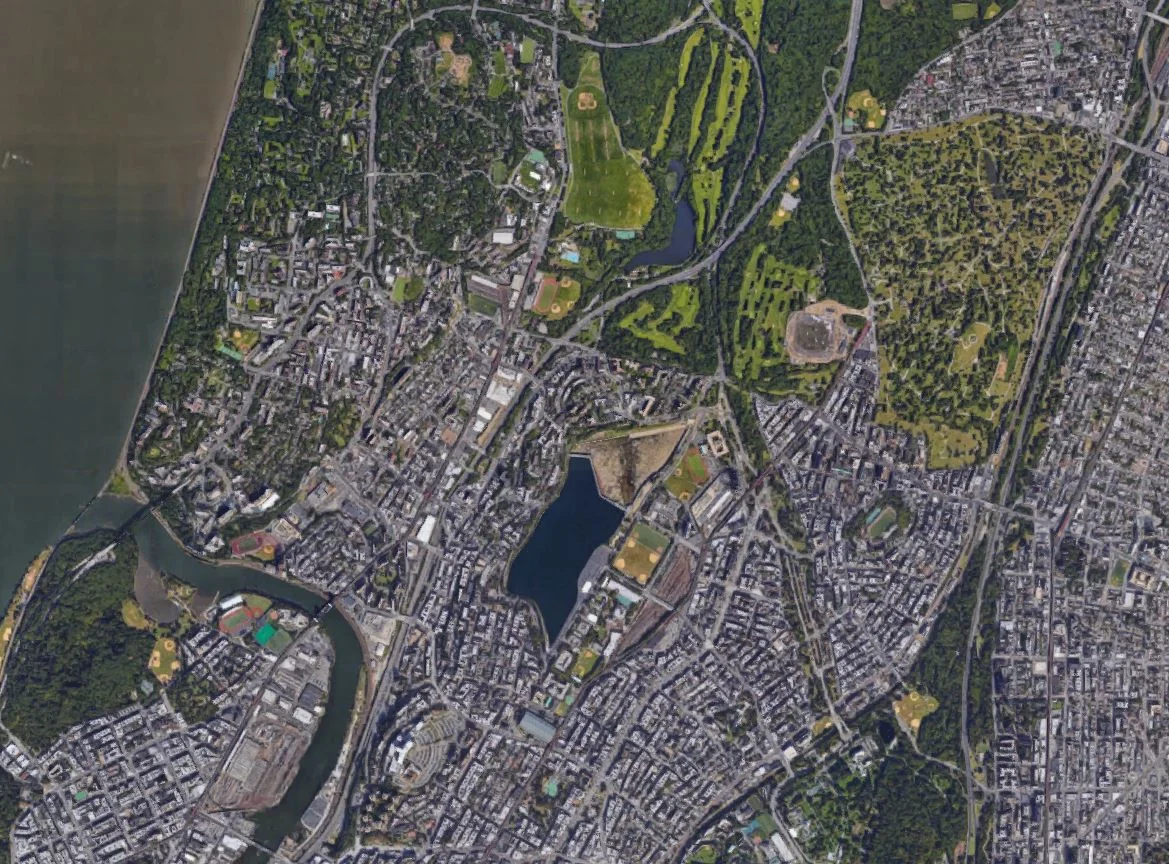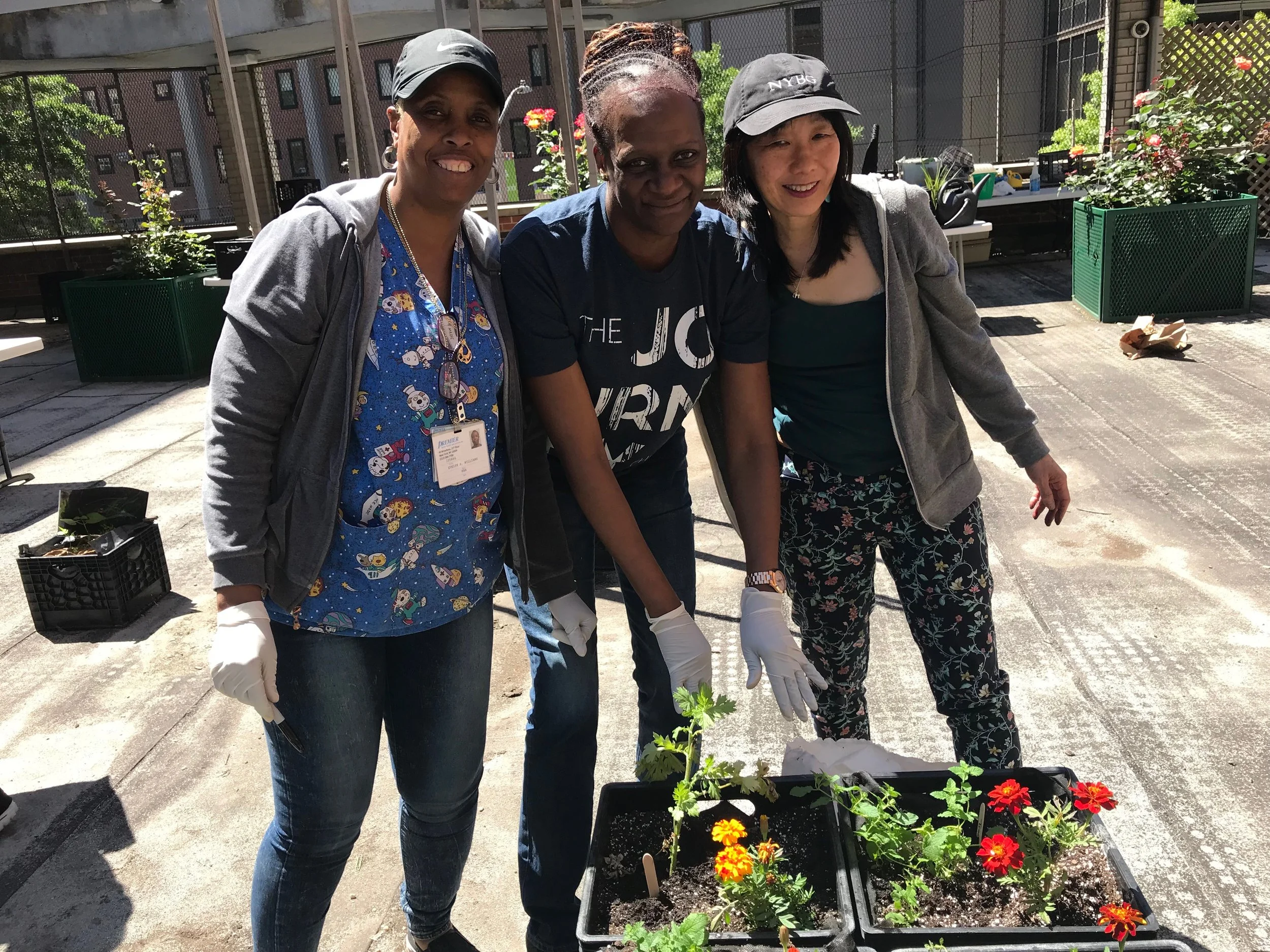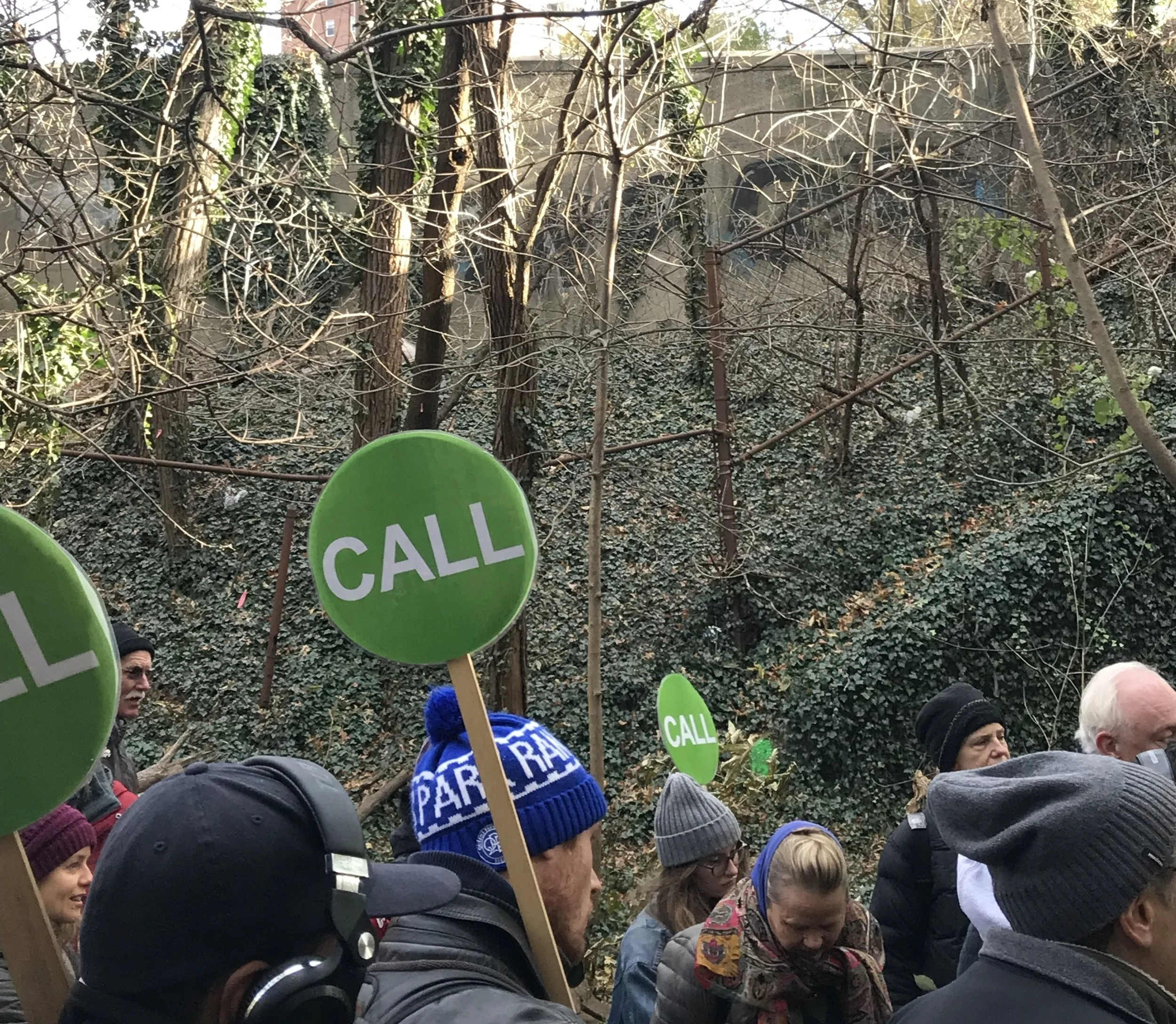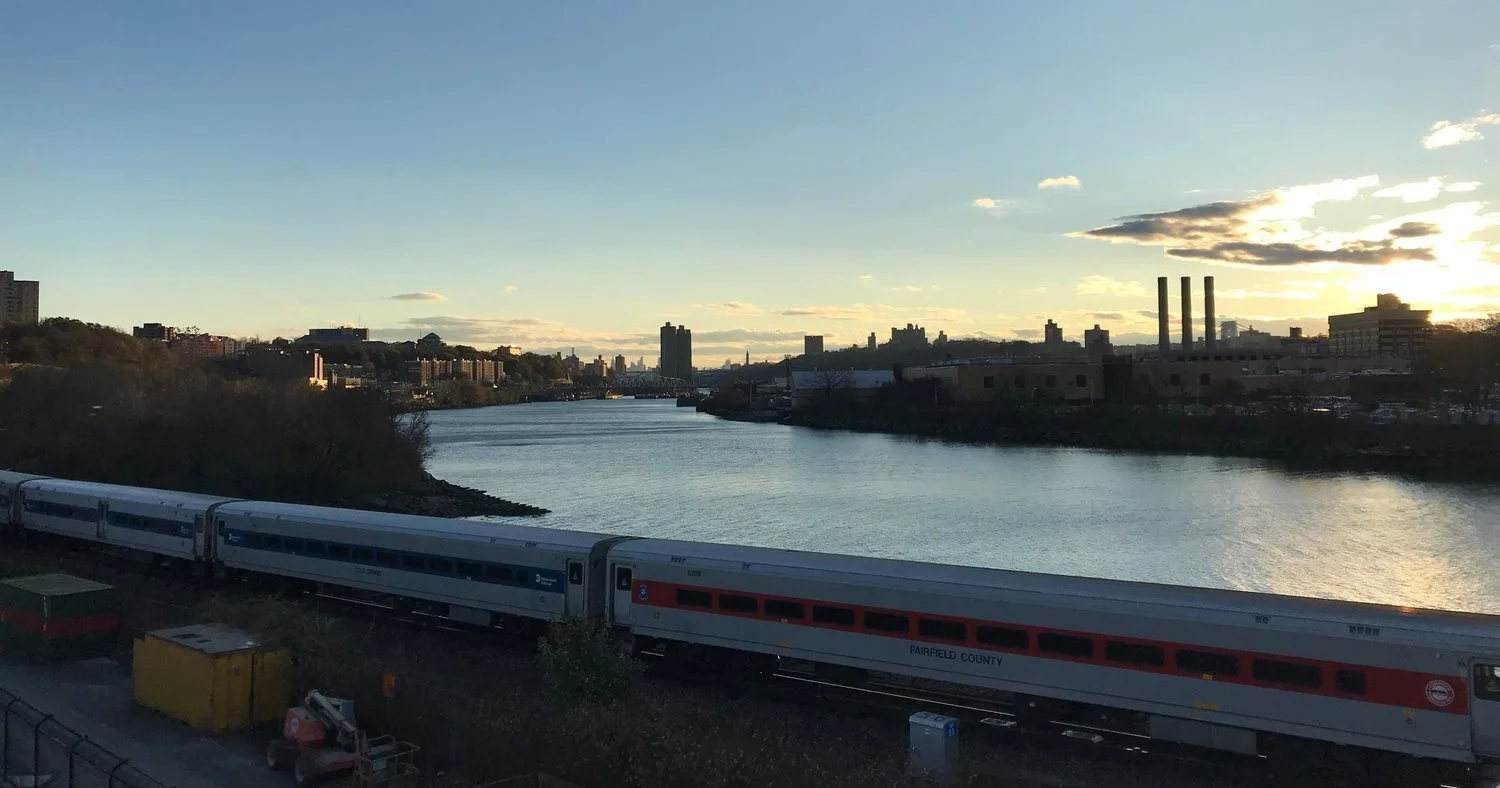Tibbets Brook meanders its way south through Westchester County, and then into Van Cortlandt Park in the Bronx, where it ducks between highways, and eventually forms Van Cortlandt Lake before suddenly disappearing. Well, not disappearing exactly, the water does go somewhere, but where?
Joanna Dema and Jessica Meuininck led the walk through the Pulaski Park Pavilion to 13th Street to observe the disastrous current state of the river and its wildlife. Joanna and Jessica explained the impact of the concrete riverbed on the wellness of the community and landscape. Introducing a Biodiversity Bingo Challenge on plant, animals & insect identification, participants were able to better understand what they were observing and how the proposal for the revitalization project and Riverwalk will benefit the surrounding community. Ending the walk at “Victory Garden”, participants were introduced to Chlaire LaFontaine, who explained her research in sustainable research in papercraft practices and the benefits of PMFs (PaperMaker’s Farms).
Read MoreThis June, CALL kick-started our Chinatown projects, collaborating with artists, architects, herbalists, engineers, community leaders and community members to come up with creative solutions to environmental problems unique to Chinatown and engage in sustainable practices together.
Read MoreArchitect Joyce Hwang and environmental engineer Prathap Ramamurthy used heat imaging technology to decode environmental conditions such as heat loss and retention in rent-controlled buildings in Chinatown. The walk was followed by a forum with community, activists about the challenges and promise of Community Land Trusts to preserve low-cost housing and to reflect on how the arts could be a catalyst to reveal the benefits of strategic renovations to energy conservation and livability.
Read MoreArtists are underutilized assets for cities and the environment: People often perceive climate change and other environmental risks as future events, happening to people in places far away, outside their own experience. Art has the power to involve people through visceral and place-based experiences, direct personal connection, and emotional engagement to evoke reaction and inspire action. City as Living Laboratory (CALL) proposes that sustainability can be made tangible and accessible to communities through the arts.
Read MoreA WaterMarks WALK led by engineer, Paige Peters and artist, Colin Matthes led a walk along National Avenue and to Paliafito Eco-Arts Park.
Leading a walk from Acosta Middle School to the School of Freshwater Sciences by way of Washington Street, South Ploycn Street and Greenfield Avenue, Melanies Ariens and Carmen Aguilar met with students, teachers and community members to facilitate a multifaceted exploration of the unseen green infrastructure in the neighborhood and its impact on water systems management.
Read MoreMy colleagues and I have been studying Tibbetts Brook as part of our investigations into the historical ecology of New York City, which started out with the Mannahatta Project, about Manhattan, and have now expanded to cover all five boroughs of New York city. Historical ecology is important for urban sustainability because it places our current perspective on the city into a natural history context; it tells us how nature makes places; it helps expand our imagination; and finally, it helps us set metrics for sustainability success.
Read MoreRescuing Tibbetts Brook: Charles McKinney, Eric Sanderson and SLO Architecture Principals, Amanda Schachter and Alexander Levi, guided a walk along the route of the abandoned CSX railway south to the Harlem River, the proposed path for the daylighting of Tibbetts Brook.
Read MoreIn the heavily reshaped environ of Walker's Square, "Hidden Water Stories" explored the disjuncture between the historic natural water pathways and the legacy of industry and infrastructure on our current perceptions. Beginning with buried water in the small community park, following storm drainage to a man-made canal sculpted from a land-filled Menomonee Valley, we circled the massive I-94 interchange considering both environmental and social impacts on the neighborhood.
Read MoreOn Saturday September 16th, WE ACT hosted a charrette in the Manhattanville Houses to invite input from residents on the preliminary for +SPACE/EPIC (Emergency Preparedness Information Kiosk). The residents reflected on what they consider EMERGENCIES, location and siting for the kiosk as well as possible programming ideas. Over 40 residents were in attendance!
Read MoreThe Urban Garden: A walk led by artist, Kanene Holder and Biologist, Paul Mankiewicz explored how people interact with nature and questioned where and if urban planning has succeeded or failed to accommodate natural ecosystems.
Read MoreFood, Culture and the Urban Environment: Artist Miguel Luciano and environmental scientist Daniel Carrion led a walk to bring awareness on the complex relationships between migration, housing, food insecurity and pollution in West Harlem.
Read MoreCALL's Inagural Fellows Forum was held last week, March 21st 2017 at the Adobe NYC headquarters. Our intimate group engaged in a conversation about the merits and means of recreating Tibbetts Brook. This noble and ecologically important stream is currently ignominiously diverted into a sewer under Broadway, where it is combined with sewage and pumped to the Wards Island sewage treatment plant.
Read MoreThis WALK explored the qualities that make public spaces inviting and unwelcoming. We examined the pleasures and benefits of public space by looking at the Upper West Side and the populations it serves through the perspectives of three New Yorkers who significantly shaped public space in the city: Frederick Law Olmsted, Robert Moses, and Jane Jacobs. From Central Park West to Riverside Park, the group considered habitat, migration, and the relationship between social and natural ecology, addressing how the nature of public spaces affects people's sense of belonging.
Read MoreThis walk with artist Marshall Reese and anthropologist Ben Orlove focused on landscape and the passage of time using techniques of deep listening pioneered by composer Pauline Olveros.
Read MoreWalking in a circle from 228th Street back to 228th Street, artist Mary Mattingly and scientist Sabine Marx describe cycles of historic and future visions, building and preservation projects that highlight New York's resources.
Read MoreHart creates interactive installations, including the recent “Oracle of Epicure,” based on her family history, part of the Crossing Brooklyn exhibit at the Brooklyn Museum. She has exhibited at The Drawing Center, NY; University of Illinois, Urbana-Champaign, IL; and Seattle Art Museum’s Olympic Sculpture Park, Seattle, WA among others.
Conley is on the faculty of New York University. He holds faculty appointments in the Department of Sociology, in the School of Medicine and the Wagner School of Public Service. His book “Honky” is both an autobiography and a treatise on the social construction of race and class in New York City during the 1970s and 1980s.

















